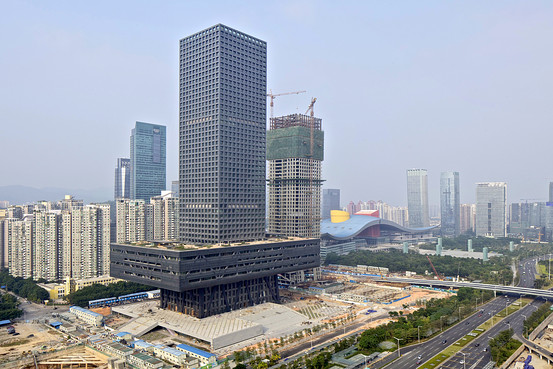At the heart of China’s rapid economic transformation lies a powerhouse manufacturing sector that has emerged as a true force in the nation’s financial realm. Today, the Shenzhen Stock Exchange, a critical pillar of China’s capital markets, bears witness to the remarkable dominance of this sector, with manufacturing companies commanding a significant share of the total market capitalization.
In this line, data acquired by Finbold indicates that as of Q2 2023, the manufacturing sector accounted for a staggering 70.36% of all Shenzhen Stock Exchange market capitalization, reaching ¥23.86 trillion yuan ($3.34 trillion). The information technology sector comes in second with nine times less market capitalization at ¥2.64 trillion, followed by finance at ¥1.63 trillion. Utilities rank fourth at ¥751.68 billion, while wholesale & retail close the top five categories at ¥697.41 billion.
Elsewhere, the annual trading value at the Shenzhen Stock Exchange in China has seen a steady rise in recent years, highlighted by a remarkable growth of 336% from ¥44.47 trillion in 2014 to ¥194.04 trillion in 2022. The trading value for 2022 represents a minor drop from the figure recorded in 2021, which was ¥195.38 trillion. In 2020, the trading value stood at ¥162.22 trillion.
Understanding Shenzhen Stock Exchange dominance by the manufacturing sector
Considering the sector’s overall dominance within the Chinese economy, it should come as no surprise that manufacturing companies hold the largest share of the Shenzhen Stock Exchange. However, there are specific driving forces behind this sector’s prominence on the exchange.
Since Shenzhen became a special economic zone, it has attracted manufacturing companies, earning the nickname “China’s Silicon Valley.” This has come with the Chinese government’s substantial subsidies and incentives, creating a favorable environment for medium size manufacturing enterprises.
The exchange’s focus on small and medium-sized enterprises (SMEs), many of which are in the manufacturing industry, further contributes to their prominence on the stock exchange. Notably, the Shenzhen Stock Exchange facilitates China’s multi-tiered capital market system with three boards: the Main Board, the SME Board, and the ChiNext Market. The SME Board caters to stable and profitable companies, many of which are in the manufacturing sector. Consequently, it serves as a barometer for China’s manufacturing industry.
At the same time, the manufacturing sector’s dominance on the exchange aligns with China’s policies aimed at attracting foreign investors and asserting its competitiveness against Western economies. The country has strategically focused on creating a capital-raising environment shaped by its broader priorities, particularly in crucial sectors essential for economic competition with the West. This approach is directed by the state and viewed with suspicion towards external influences.
Manufacturing sector uncertainty
Yet, the sector’s dominance on the exchange has come with a share of challenges. In particular, it grapples with heightened global competition, mounting environmental concerns, and the looming impact of economic cycles.
A striking example of this is the recent trend of China’s factory activity experiencing contraction for a fourth consecutive month as of July. Several enterprises have reported that the prevailing external environment remains complex and severe, resulting in a decline in overseas orders and a persistent struggle with insufficient demand – a primary difficulty these enterprises face.
In general, China’s manufacturing sector has played a pivotal role in the country’s economic ascent and has become a dominant force in the Shenzhen Stock Exchange. Its vast market capitalization signifies the influence it wields in the nation’s financial landscape. Investors, both domestic and international, are likely to keep a keen eye on this sector as it continues to play a role in driving China’s economic growth and shaping its future.
Impact of economic uncertainty
On the other hand, while the annual trading value at the Shenzhen Stock Exchange has been steadily rising, a slight drop in 2022 has underscored the prevailing uncertainty. For instance, Shenzhen and Shanghai experienced significant losses in 2023 amid doubts about China’s ability to sustain economic growth.
A lack of confidence in China’s future economic prospects has swiftly spread, as its post-coronavirus recovery seems to have faltered after initial signs of improvement. Consequently, Chinese consumers are becoming more cautious about spending due to emerging concerns. The government’s recent tightening of its grip on the economy, aimed at controlling debt and inflation, has also added uncertainty about the economy’s future direction. Indeed, these developments are likely to have an impact on the equities market.




